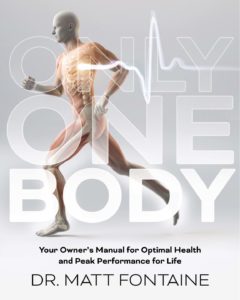28 Apr New Evidence Shows Spinal Manipulation Reduces Pain and Improves Motor Control
The following is excerpted from an article in Dynamic Chiropractic by Malik Slosberg, DC, MS “A growing body of evidence indicates that injury, inflammation and pain arising from spinal joints not only affect the individual joints involved or a region of the spine, but also has a significant impact on the function and structure of both the sensory and motor brain. Recent research suggests that the cortical neuroplastic changes associated with pain may be reduced or normalized with cervical spinal manipulation and motor-skill training.” Read the full article here The article sites the following study:
- Haavik-Taylor H, Murphy B. ACC-RAC Award Winning Paper. Altered central integration of dual somato-sensory input after cervical spine manipulation. JMPT, 2010;33:178-88.
In summary, the study notes that episodes of acute pain with injury may induce plastic changes in the sensorimotor system including dysfunctional motor control of spinal joint segments; that is, the manipulable lesion that chiropractors treat. Cervical spinal manipulation appears to improve cortical integration of somatosensory input and helps explain a mechanism for pain relief and restoration of function after spinal manipulation. Key Points from a few studys noted in the article are:
- Haavik-Taylor H, Murphy B. Altered sensorimotor integration with cervical spine manipulation. JMPT, 2008;31:115-26.
- Wand BM, et al. Cortical changes in chronic low back pain: current state of the art and implications for clinical practice. Manual Therapy, 2010:1-6. Epub ahead of print.
- These two studys showed plastic changes in the sensorimotor brain of patients with neck and LBP.
- In the primary somatosensory cortex in chronic back pain patients, the representation of the lower back is expanded and shifted medially, invading the area where the leg is normally represented. This can lead to pain in patients with chronic LBP to be misinterpreted by the sensory cortex to be leg pain(sciatica).
- impairments in memory, language skills, and mental flexibility, as well as deficits in cognitive function, changes in decision-making and appraisal, have been seen in chronic back pain patients.
- chronic pain can actually lead to alterations in somatosensory maps, resulting in what is currently referred to as cortical neuroplasticity and reorganization.
- Neuroplasticity and reorganization refers to the ability to develop new neural circuitry, new connections of neurons, changes in representational patterns in the sensory and motor cortex, reorganization of neural territories.
- These neuroplastic changes are associated with alterations in motor function such as improved motor-skills following novel motor-skill training or disturbed motor patterns in the presence of experimental or chronic pain.
- Changes of this type may be attenuated or reversed by rehabilitation. Motor-skill training has been shown to increase the excitability of the motor cortex and help restore cortical maps back toward normal.
- Pain interferes with proper motor skill control. Therefore, rehabilitation exercises should be done in a pain free manner to optimize success.
- Rehab exercises must occur in a progression, moving slowly from basic movements and patterns to more complex movements and patterns. This allows for the neuroplasticity to occur and retrain proper movement patterns via proper sensorimotor skills and neural connections.
- Slowly increasing the complexity of a novel motor-skill task over the course of rehab training encourages cognitive effort and enhanced cortical neuroplastic changes with novel motor-skill training.
-
Lederman E. “The Myth of Core Stability.” J Bodywork & Movement Ther, 2010;14:84-98.
-
This review paper discusses the complexity of motor reorganization with spinal/trunk injury and pain affects all levels of motor ability. It is an overall control reorganization, rather than the failure of particular motor components.
-
This points to the fact that a spinal injury can lead to disrupted sensorimotor control, in the brain, of movement patterns, core stability, and function on a whole body scale.
- Several very recent studies provide evidence that spinal manipulation and motor-skill training not only help reduce pain and improve function, but may contribute to normalizing cortical neuroplasticity and reorganization.
- These studies represent yet further evidence that manipulationn combined with proper sensoorimotor rehabilitative training provide profound improvement in pain and human performance.




